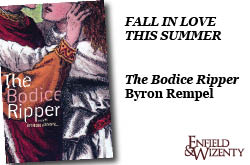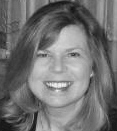By Marsha Forchuk Skrypuch
I love going to the Ontario Library Association Superconference, which is held in Toronto each year at the end of January, usually to the accompaniment of a massive snowstorm. It’s not just the buzz of being around so many avid librarians, authors, publishers and book-a-holics, it’s the perfect opportunity to find out what the next great book will be.
The Canadian Society for Children’s Authors Illustrators and Performers (CANSCAIP) has a mass book launch each year at the Superconference, with a couple dozen authors each getting about three minutes to talk about their newest creation.
When Gail Sidonie Sobat got up to the podium, she introduced her newest young adult novel, Not With A Bang, with a medley of songs: “One Toke Over the Line” (Brewer and Shipley), “Old Man” (Neil Young), “Stop This Train” (John Mayer), “When the Leaves Come Fallin’ Down” (Van Morrison), and recited a stanza from Paul Simon’s “You Can Call Me Al.” It was such an intriguing introduction that I had to read the novel.
 Gail agreed to answer a few questions about the writing and thinking behind Not With a Bang (Magpie Books/Palimpsest Press):
Gail agreed to answer a few questions about the writing and thinking behind Not With a Bang (Magpie Books/Palimpsest Press):
You have so many powerful parts in this novel that are almost stand-alone poetry. You are a poet as well as a novelist. Can you tell me about that?
From a very early age, I was rather mesmerized by poetry. I read and memorized poems and sang verses and rhymes. In grade school, I began to write both poetry and prose. Much of my tortured teenaged years were recorded in poetry and song rather than in prose journals. (I have locked all these poems away, luckily for the world!) Today, I have a special “Pomes” (sic) folder on my computer that is for writing poetry, and I deliberately use verse forms in the one document I call “Fifteen Minutes.” It functions as a place to be playful and whimsical with language in a non-prose or not strictly prose manner.
How do you decide what becomes a poem and what becomes a story?
I don’t often think in terms of a narrative arc when I write poetry so that is likely the deciding factor between what will be a poem rather than a story. If poetry creeps into my prose writing—other than stand-alone poems that I sometimes write in the voice of a character—it’s likely because I am a musician and I hear language as music.
I found it interesting that you used an intensely intimate third person point of view. You handled it really well and I think what you’ve done with this novel is to create a third person narrative that is more intense and emotional than most first person narratives. Can you tell me about that?
Your question is interesting because this novella was originally a short story written in the first person. As the story grew beyond a reasonable length for a short story, I realized something didn’t work about Jan narrating the story. So I started all over again, as writers often must do. Perhaps because I know this boy Jan so well—I’ve taught this boy, or some version of him so many times in my career—I found a way into intimacy through the third person limited point of view. It is one of the points of view that allows for deep penetration into the mind of an important character.
One of my pet peeves is YA novels where the teen protagonist is enthralled with music of the era when the author was a teen. Jan does love 60s and 70s music in Not With A Bang, but it goes way beyond that. There is such a breadth of music and an undercurrent of separate stories all surrounding music. Paul Simon primarily, but many many others. Can you tell me about how this music informed your creative process for this novel?
Having studied voice for most of my life, I am saturated in music much of the time. Though my technique is classically grounded, I began singing as a child, listening to my much older brother’s music that was popular at the tail end of the sixties and early seventies. I fell in love with protest songs and that admiration continues to this day. I still gravitate to current artists who have something to say and who say it well, and I feel it’s my job as an educator (and a writer for young people) to be aware of what is happening in popular music.
Because I began with the premise of Eliot’s poems, particularly “The Hollow Men” and “The Love Song of J. Alfred Prufrock,” and I tuned my ear to what was happening in music that thematically linked with Eliot. Of course, I thought of Paul Simon. In fact, Simon had just put out a new album and performed on Saturday Night Live as I was writing, and he is still so current. I wanted Jan to “discover” Simon through the character of Al, who had lived through the sixties and was a draft dodger. I know a great many musicians, including my partner, and several young singer-guitarists. They ALL learn Neil Young. Then John Mayer also came to mind. The music of Simon, Mayer and Young are important touchstones throughout the book, though there are many other musical references. I chose these, whether in chapter titles or in the text, specifically to reflect Jan’s reformation: sloughing off his former delinquent skin, falling in love with Jodi, his dawning awareness of social justice, and above all his confrontation with death and his own mortality. Because Jan is a sensitive boy attuned to lyrics, the songs resonate for him (and I hope for the reader).
Eventually, as do so many people who love another, Jan makes Al a mixed CD of the old man’s favourite tunes. In that selection, I tried to draw on what an old hippie would love to hear: The Band, The Grateful Dead, Dylan, Hendrix, Buffalo Springfield, Neil Young. But equally important are the newer musicians Jan introduces to Al: Mayer, Jason Mraz, Dave Matthews, Sloan, Radiohead, The New Pornographers, Glen Hansard, and I sneak in a reference to a wonderful Alberta singer-songwriter, Maria Dunn.
Music has helped me through so many dark or difficult moments in my life, and it has also been a source of much joy. That is perhaps why many of my characters in my various novels are likewise immersed in or affected by music. Certainly for Jan, playing music and writing poetry help him through the rites of passage from boy to man, the challenge of being bodyguard to Al, and the terrible reality of accepting his own and the old man’s mortality.
You touch on a number of serious social issues in this novel and I don’t want to give the ending away, but I love how you flipped Jan’s opening dilemma to create a satisfying ending. Did you have this ending in mind the entire time or is it something that came to you as the story evolved?
Endings are so tricky and enigmatic. I don’t quite know when the ending occurred to me, likely as I thought about the circularity of life and death, that continual dance of birth and death so beautifully expressed in The Tibetan Book of Living and Dying.
Can you tell me about your research process for this book?
I’ve been reading around the ideas for this novel for years. I’m a huge fan of T.S. Eliot; I’ve read and taught his work many times, and I’m in awe of his talent. So Eliot’s works were primary research texts for the book. Certainly, my familiarity with Salinger’s The Catcher in the Rye influenced my own novel. So, too, The Tibetan Book of the Dead. And I’ve also read, sung, studied and taught the lyrics of Paul Simon which in large part inform the narrative. As well, I researched literature around cancer, death and assisted suicide, conscientious objectors in the wars of the last and this century. Of course, I have first-hand knowledge of seniors’ residences, as my elderly mother currently resides in one. For several years, I worked as an artist on the wards of the University of Alberta Hospital. In that role,
I often sang at the bedside of the very elderly, the sick and dying. These were transformative experiences, and certainly taught me a great deal about some of the realities of growing frail and the end of life. As well, I watched my own father die of lung cancer, so those powerful memories helped me to draw the character of Al.
Which character was the most challenging to write? Why?
Perhaps the character, Jodi, was hardest to write. I was initially more interested in Jan and Al. I had good advice to round Jodi out, and it took energy and commitment to make her more than incidental to the novel.
Which character is most like you?
I don’t think any of the characters are really like me. I’d say the character Jan is most like my partner, Geoff, who was a little lost his during early teen years. His life story informs the character Jan and some of the events of Not With a Bang. Like Jan, Geoff is in love with words and literature and music, but he reached a kind of crossroads in his life where he had to rediscover that love.
What is your writing routine? What aspect of being a writer drives you nuts?
Frantically finding concentrated moments of intense concentration and industry in a frantic life. When I’m working on a novel, I try for 1,000 words a day. But there are many times when life interrupts my writing. So in answer to your other question, that is the aspect of being a writer that drives me nuts. That, and the fact that I’m completely unknown in my home province. It would be so nice to be read in Alberta.
What are you working on now?
I’ve just worked with an editor on a collection of poetry, How the Light is Spent, that is coming out in May 2013. I’m also working on a YA graphic novel, Jamie’s Got a Gun, with artist Spyder Yardley-Jones, and I’m trying to finish an adult novel.
The advice that everyone gives to an aspiring writer is to read, read, read. What else should they do?
I’d invite young writers to write with humility. It’s important to feel good about what one has written, but not to rest on one’s laurels, or worse, have a sense of entitlement about one’s writing. It’s essential to put the work before the ego, to admit that there are authoritative readers and it behooves us to listen to their comments, or at least consider them when working on or reworking a piece. I’d also recommend that our friends and family are not necessarily those authoritative readers. Write, write, write, and then re-write. Work isn’t finished after one draft.






4 Comments
Great article and interview. I can’t wait to get this book for my library- and hopefully read it first before someone notices it’s in :)
You’re in for a great read, Heather!
A wonderful interview!
Thanks for reading, Merna. Gail Sobat was a fantastic interviewee.